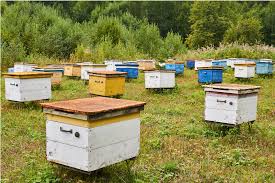Bees in Motion: Mt Kenya & Aberdare → Laikipia
Tracking migration, hive dynamics, and the vital corridor that connects them

Bee Migration & Hive Dynamics
Swarming and Absconding: In African honey bee systems, certain colonies will completely abandon a hive (abscond) and migrate to greener foraging zones during seasonal stress.
Hive as Starting Point: The original hive is crucial—it's where the colony must accumulate enough stores, brood strength, and “motivation” to undertake migration.
Migration Routes: The bees fly along corridors of suitable habitat, using landmarks, sun positioning, and environmental cues to maintain direction.

Corridor Needs: Trees, Nectar & Resting Points
Shade & Shelter: Migrating bees often rest in trees or shrubs mid-route. Indigenous tree cover allows for resting “staging posts.”
Nectar & Pollen Sources: To fuel energy, bees require continuous floral resources along the route. Each stretch between resting stops must have flowering plants.
Water & Microclimate: Streams, springs, and cool microclimates help bees hydrate and maintain hive temperature during pauses in migration.

Connecting Origins & Destination
Genetic Flow: As bees from Mt Kenya and Aberdare migrate and intermingle via corridors, their populations exchange genes, improving resilience.
Mutual Benefit: The hives in Laikipia benefit from incoming bees (boosting pollination), while mountain populations gain fallback options during harsh seasons.
Conservation Synergy: The existence of continuous corridors with hive-compatible habitat ensures linkages between ecosystems that would otherwise be isolated.
Conclusion
Using images of migrating bees, beehives, and comb, the narrative becomes more vivid. A functional bee corridor—lined with native trees, nectar sources, water, and resting nodes—is not just theoretical, but essential for the survival and movement of bee populations between Mt Kenya, Aberdare, and Laikipia.